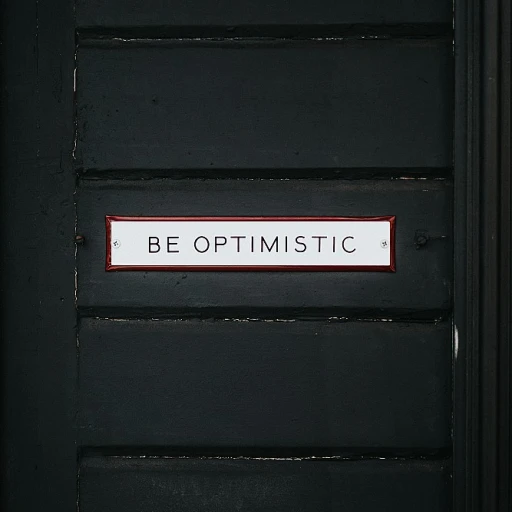Demystifying Organizational Change: Understanding the Core Concepts
Laying the Foundation of Organizational Ironworks
At the heart of every successful organizational change initiative lies a solid understanding of the core concepts that govern transformation. It's like piecing together a complex machinery where every component must align perfectly. In light of tailoring business structures to market demands, we recognize that organizational change is not a one-off project but a strategic pathway that demands both cognitive and structural alignment.
The Fabric of Change: What It Really Entails
Organizational change is a multi-faceted beast, characterized by the strategic repositioning of a company. An organization may decide to adopt new technologies, shake up their corporate culture, or pivot their market focus. This isn't a mere shift; it's a systematic reworking of policies, processes, and people to stay in step with or ahead of industry advancements. Statistically, Gartner reports that a staggering 73% of organizations are engaging in some form of major transformation.
Movers and Shakers: The Pioneers of Change
Key shapers, such as John Kotter and Kurt Lewin, have penned seminal works that serve as compasses for navigating these choppy waters. Kotter's 8-Step Process for Leading Change and Lewin's Force Field Analysis are essential readings to grasp the nuances of change management. Within these strategic outlines, one finds the heartbeat of organizational fluidity—a dynamic blueprint prompting both leadership and employees to the necessity of transformation.
From Blueprint to Footprints: The Case Study Approach
In the realm of change, nothing speaks louder than results. Illuminated under the spotlight of successful change are companies like Microsoft and Netflix, which stand as testament to the power of effective change management. Microsoft's pivot towards cloud computing and Netflix's evolution from mail-order service to streaming giant underscore the impact of skillful adaptation to technological advancements and market demands.
Peering Through the Data Lens: Numbers Speak Volumes
A rigorous examination and interpretation of data must underpin the dialogue around change. SHRM's 2017 report echoes this sentiment, highlighting the critical role of data in understanding the cost and benefits of change initiatives. Similarly, research from Harvard Business School Online pins down change success rates to the precision of how well organizational leadership understands and leverages data to support their transformation efforts.
Charting the Change: The Role of Leadership in Transformation
Steering Successful Change with Organizational Leadership
Leadership is not just a title; it's a pivotal force in the march towards organizational change. The ability to assess, align, and mobilize resources and people is emblematic of astute leadership, particularly when steering companies through the windy roads of transformation. So what does the role of leadership truly imply in this context? Let's peel back the layers.
Empowers and Shares Vision
The journey toward change begins with a vision. Leaders must paint a compelling picture of the future that resonates deeply with employees. Microsoft serves as a prime example, where CEO Satya Nadella’s vision for a 'mobile-first, cloud-first' strategy galvanized a renaissance in the organization's culture and market approach.
Nurtures Adaptability and Resilience
To navigate the organizational change maze, leaders like Apple’s Tim Cook demonstrate the importance of adaptability, identifying the need for change early, and remaining resilient through market shifts. Studies have shown that adaptability, not just scale, is key to thriving during extensive change, as reported by Harvard Business Review.
Leverages Employee Engagement
Organizational change cannot occur in a vacuum; it demands active employee engagement. Leaders must kindle the spirit of co-ownership among team members, encouraging them to contribute ideas and energy to the change effort. Companies like Netflix have been known for their empowered culture where employees are engaged proponents of change.
Enacts Change Management Strategies
A leader's toolbox must include effective change management strategies. Models like John Kotter’s 8-Step Process for Leading Change provide actionable frameworks for leaders. These strategies are crucial for gaining buy-in and facilitating a smoother transition within an organization.
Supports Learning and Development
Harvard Business School Online elucidates the importance of continuous learning for leadership during organizational change. By promoting an environment of learning and development, leaders can help ensure that employees have the skills necessary to succeed in the new paradigm. Gartner’s research echoes this by showing that companies that invest in employee training see less resistance to change.
Stays Attuned to the Human Side of Change
Amidst all the strategy and planning, effective leaders recognize the human element inherent in organizational change. Acknowledging the people side of change, leaders should anticipate and manage the emotional journey of their team members, as advised by the Change Management Institute.
Crafting Cohesive Communication: The Backbone of Change
Defining the Core of Change Communication
In any organizational change, the way leaders broadcast the vision and plans can either make or break the initiative. Strategic business navigation, similar to crafting a masterpiece of communication, involves a thoughtful blend of accuracy and creativity. It starts with a solid understanding of the change objectives, aligned with the core business values, and expresses them in a language that resonates with every level of the organization.
Enabling Transparency and Trust
Transparency isn't just about giving them the hard facts; it's about building trust. Employees should feel that they're part of the dialogue and not just on the receiving end of a directive. This trust is cultivated when management openly shares both the triumphs and trials of the change process, giving a realistic picture of the journey ahead.
Gearing Up for Two-Way Interaction
For communication to be the backbone of organizational change, it must be two-way. Leaders are to foster an environment where feedback is not just accepted but actively sought. Digital transformation initiatives, for example, require this kind of two-way traffic to understand how technology affects day-to-day activities and to adjust plans accordingly.
Customizing the Message for Different Audiences
One size doesn't fit all in the diverse landscape of any company. Messages around change need to be tailored to different departments, recognizing that their roles in this transformation will vary. A savvy approach involves segmenting the audience and crafting key messages that connect with each group's specific needs and contributions to the change effort.
Utilizing a Variety of Communication Channels
It's not just what you say; it's also how you say it. An effective change communication strategy employs multiple channels to disseminate information. This could include meetings, emails, newsletters, and modern digital platforms that allow for real-time updates and interactions.
Maintaining Consistency Amidst Variability
While customization is key, consistency in the core message ensures that everyone is on the same wavelength. This approach mitigates the risk of mixed messages that can lead to confusion and resistance to change. A firm grasp on the organizational change management process helps maintain this consistency.
Reinforcing the Message Repeatedly
Repetition is a powerful tool in embedding the principles of change within the organization. Like the grooves on a record, each repeated message deepens the understanding and acceptance of the changes taking place. Reinforcement through ongoing communication is critical for sustaining change.
Preparing Leaders to be Effective Communicators
Finally, organizational leaders must be prepared and supported to act as the main communicators of change. Training and tools should be provided to help them convey the message effectively. Their role is to personify the change, embody leadership qualities, and guide their teams through the transformation with clarity and empathy.
The People Side of Change: Cultivating a Supportive Culture
Empowering Teams and Nurturing Talent
Embracing organizational change is not just about implementing new systems or processes; it is fundamentally about the people who make up the organization. A culture of support is pivotal for enabling employees to adapt and thrive amidst change. Harvard Business Review emphasizes the significance of the human element in change initiatives. It's not enough to communicate the change; leaders must actively involve and empower their teams. Noteworthy statistics from Gartner reveal that companies with high employee involvement in change efforts are more likely to report successful outcomes than those with low employee involvement.
Effective organizational change nurtures the talent within the company, fostering an environment where employees are motivated to develop new skills. According to studies, employees who feel supported during transitions are more likely to exhibit resilience and flexibility — key traits required for the continuous evolution of business practices.
Building Trust Through Transparency
Clear and transparent communication during times of change is non-negotiable. A Towers Watson study conveys that organizations with highly effective communication practices are three and a half times more likely to outperform their peers. Leaders must actively engage in dialogues, not monologues, sharing the rationale behind changes and addressing concerns. Companies like Microsoft underscore the value of transparent leadership during their own digital transformations. Similarly, John Kotter's work on leading change highlights the need for a clear vision that is effectively communicated.
Addressing the People Side of Change
One cannot overlook the people side of change, where emotions and personal connections to the past ways of working often pose barriers. Recognizing and acknowledging these feelings paves the way for more empathetic management practices. The Society for Human Resource Management (SHRM) advocates for strategies that address emotional responses to change, such as the loss of routine, fear of the unknown, and management of uncertainty. Utilizing models like the ADKAR (Awareness, Desire, Knowledge, Ability, Reinforcement) framework, organizations can tailor their approach to assist employees through each stage of the change process.
Empirical Insights and Case Studies
Real-world examples stand as testament to the merits of concentrating on the human aspects of change. Companies such as Apple and Netflix have successfully navigated major organizational transformations by investing in their cultural ethos, supporting their workforce through the change journey. Netflix, for instance, is hailed for its revolutionary culture code which emphasizes freedom and responsibility — a philosophy that has been instrumental in their adaptability.
Moreover, resistance to change can be transformed into a source of innovation. Harvard Business School Online furthers this notion by exploring how business leaders can identify and harness resistance for positive outcomes, turning potential roadblocks into stepping stones for growth.
In conclusion, the real catalysts for successful organizational change are the employees themselves. Creating an atmosphere where change is not just an edict but a shared objective will pave the way for seamless business evolution. Whether through comprehensive communication, leadership transparency, or empathetic change management strategies — the people-centric approach remains at the core of transformative success.
Navigating Through Resistance: Overcoming Organizational Inertia
Why Resistance Occurs in Organizations
When employees are introduced to new strategies and visions, the initial enthusiasm can be swiftly hampered by the daunting and familiar shadow of resistance. We know that as much as 70% of organizational change projects fail, and often, resistance to change is cited as the leading contributor. So why does this occur? Studies from institutions like Harvard Business School pinpoint a sense of uncertainty and fear of the unknown as significant factors. When the status quo shifts, it can disrupt employees' sense of competence and autonomy, leading to discomfort and pushback.
Strategies to Overcome Resistance
Effective change management revolves around recognition and response to these challenges. For instance, effective leaders anticipate resistance and integrate strategies such as transparent communication and inclusive decision-making processes to involve those affected directly by the change. Models like the ADKAR Model focus on awareness, desire, knowledge, ability, and reinforcement as keystones to driving successful change within organizations.
In practice, companies like Microsoft and Apple have leveraged these strategies to gain employee buy-in for major initiatives. Leaders encouraged teams to voice concerns and contribute ideas, effectively involving them in the change process – a practical move suggested by experts at the Change Management Institute.
The Human Side of Change
A pivotal element often overlooked is the 'human side of change'. This involves acknowledging the emotional and psychological transitions that individuals undergo. Renowned author and psychologist Kurt Lewin introduced the concept of unfreeze-change-refreeze, which emphasizes the need for a period of unfreezing or preparing for the change before it can be implemented and eventually institutionalized.
Leveraging insights from organizational psychologists and behavioral data analytics can help identify the sentiments and potential resistance arenas. For example, a report by Gartner suggested that recognizing employee’s emotional responses to change initiatives can significantly improve the success rate of organizational change.
Tailoring Change to the Team
Relationship dynamics within a team can make or break a change effort. Managers equipped with a deep understanding of their team's dynamics can tailor the change strategy for smoother transitions, utilizing skills like empathy, patience, and the ability to foster an inclusive environment where all members feel seen and heard. This is where corporate giants like Netflix shine, creating adaptable and resilient teams by ingraining an organizational culture that values continuous learning and open, honest feedback loops.
Learning from Resistance
Resistance is not always a negative force. It can provide valuable insights into the risks or oversights in the change plan. By harnessing the insights that resistance offers, an organization can refine its approach to change. As John Kotter of Harvard Business Review suggests, addressing the concerns leading to resistance can strengthen commitment and implementation in the long term. Learning from resistance is like refining strategy mid-stream, ensuring that realignment happens with the collective intelligence of the organization.
Digital Transformation: A Key Pillar in Modern Organizational Change
Embracing Digital Transformation as a Springboard for Change
At the heart of today's business evolution lies digital transformation, an integral component that propels organizations towards modernity and efficiency. John Kotter, a professor at Harvard Business School, emphasizes that successful organizational change often hinges on the strategic integration of technology. According to a Gartner survey, an estimated 87% of senior business leaders identify digitalization as a company priority. Yet, harnessing the full potential of digital transformation is more than just the adoption of new technologies; it signifies a paradigm shift in how companies operate and deliver value to their customers.
The Role of Leadership in Steering Digital Change
Leadership plays a stellar role in orchestrating digital initiatives. From the C-suite to front-line managers, it's a leadership chorus that sets the tempo for change. Harvard Business Review suggests that leaders must communicate a clear vision for the digital future, providing employees with a sense of purpose in this journey. In her book 'Leading Digital Transformation', author Annika Steiber highlights that companies like Google and Apple thrive by cultivating leadership styles that support innovation and agility.
Choreographing a Company-Wide Rhythm for Transformation
Change is a dance that requires every part of the organization to move in harmony. As reported by Kumar Parakala of GHD Digital, successful digital transformation entails aligning the change management strategy with organizational culture and values. This alignment ensures that employees understand and support the digital shift. According to the Change Management Institute, an effective strategy incorporates tailored change management tools that resonate with the culture and the specific dynamics of the business.
Fostering a Culture Receptive to Technological Advances
To make the transformation meaningful, an organization must nurture a culture that embraces change. Netflix, for example, excels in cultivating a culture that encourages experimentation and risk-taking - essential ingredients for digital innovation. SHRM outlines that fostering such a culture involves training and support to help employees navigate through the change, mitigating resistance and building a cohesive drive towards the common goal.
Decoding Resistance to Change and Digital Readiness
Resistance to change is a natural human response, but when it comes to digital adoption, the stakes are higher. Studies have shown that addressing the 'people side of change' is critical to overcoming inertia. The ADKAR model—a framework that focuses on the stages of awareness, desire, knowledge, ability, and reinforcement—can be an invaluable tool for managers to address individual and organizational resistance, ensuring a smoother transition into the digital era.
Case Examples of Digital Transformation Triumphs
Companies that have mastered organizational change within the digital domain offer insights into best practices. Take, for instance, Microsoft's pivot towards a cloud-first, mobile-first strategy. This major organizational change ushered in a new era for the tech giant, emphasizing continuous learning and innovation. Similarly, the digital transformation strategies employed by companies like Apple reflect the importance of constant evolution and the reinvention of processes, products, and services in the digital age.
Quantifying Success: The Metrics of Digital Change
Quantitative measures play a pivotal role in evaluating the effectiveness of digital transformation. Data-driven metrics such as user adoption rates, digital proficiency levels among employees, and customer satisfaction scores provide tangible benchmarks for success. According to a Towers Watson report, companies that use metrics to track the progress of their digital transformation are three times more likely to report successful change than those who don't.
Measuring the Tide of Change: The Use of Change Management Tools
Decoding Change Impact With Effective Management Tools
At the heart of successful organizational change lies the acute ability to measure progress. Renowned experts, from Kotter to Lewin, have long emphasized the significance of tracking change. In company corridors where change initiatives unfold, an array of tools steer managers through the transformative waves.
Quantifying the Shift with Change Management Models
Models such as ADKAR and Kotter's 8-Step Process, provide structured frameworks that outline the journey of change. By breaking down the process into digestible phases, businesses can quantifiably assess each stage. For instance, surveys by Prosci indicate high efficacy for the ADKAR model, with companies reporting up to a 72% success rate in meeting project objectives when using this framework.
Collating Data: The Digital Difference
Bringing technology into the equation, data analytics platforms have revolutionized how we perceive and interpret change. Microsoft Dynamics 365 and Intune offer insights that help align organizational strategies with employee adoption. Real-time analytics provide hard figures, revealing the extent of employee engagement and the effectiveness of communication strategies.
The Pulse of Change: Employee Feedback Mechanisms
Employee resistance is a natural part of the change journey. Towers Watson reports highlight communication as a pivotal lever in reducing resistance. Engaging surveys, feedback forms, and interactive sessions can quantify employee sentiments, offering invaluable data that aligns management strategies with the people side of change.
Leadership’s Compass: Gartner’s Tactical Tools for Leaders
Gartner's extensive repository of strategic advice equips leaders with necessary compass points. Using these resources, leaders can craft roadmaps that reflect the complexities of change, ensuring that the team's navigation is coherent with the company's desired direction.
A Mirror to Progress: Case Studies and Examples
Time-honored and fresh case studies serve as mirrors, reflecting the effectiveness of different strategies. Netflix's nimble adaptation to streaming is today's Harvard Business case study on embracing technological changes, whilst the struggles of Blockbuster serve as a stark reminder of the perils of stagnation.
Engagement Metrics: Understanding Adoption Levels
Change management software often embeds metrics to gauge progress. Reports on system usage, training completion rates, and project milestone achievements provide tangible evidence for how the change is taking root within the organization, guiding future change efforts and fine-tuning ongoing strategies.
Diagnosing the Culture: Marsh McLennan’s Organizational Insights
Experts from Marsh McLennan emphasize cultural alignment in their studies. Diagnosing cultural aspects with tools that measure organizational health is crucial, as it significantly influences employee buy-in and can either catalyze or choke the progression of change initiatives.
The Integration of Emotional Intelligence in Change Management
Lastly, no set of tools is complete without addressing the emotional journey of change. Effective change management strategies intertwine emotional intelligence with structured models, ensuring that change feels less like a directive and more like a collective evolution of the organizational ethos.
The Iterative Process: Learning from Change Initiatives
Embracing the Cycle: Iterative Learning in Change Initiatives
In the realm of organizational change, the journey doesn’t end with the implementation of new policies or systems. Rather, the hallmark of a learning organization is in its approach to change as an iterative process. Taking calculated steps, reflecting on outcomes, and integrating feedback are pivotal practices that enable an organization to hone and refine its strategies over time. Drawing insights from past change initiatives offers a rich tapestry of knowledge that can guide future endeavors.
Case Studies: The Compass for Future Endeavors
Successful organizational change is rarely a straight shot. Cases from industry giants like Apple and Netflix highlight how responsiveness to feedback and willingness to adapt have underpinned their continuous evolution. Apple’s forward-thinking approach to product development and customer feedback loops exemplify the iterative learning that fuels its unparalleled innovation. Similarly, Netflix’s pivot from DVD mail service to streaming behemoth showcases the grandiosity of iterating based on market changes and consumer behavior. These narratives serve as a testament to the power of learning from each chapter in the change narrative.
Analyzing Feedback: The Compass of Iteration
For any organization, feedback serves as a crucial compass. It’s not only about harvesting raw data but analyzing it for actionable insights. A study by Gartner underscored that companies with effective feedback collection and analysis systems experience up to a 14.4% lower turnover rate than those without. Managers and team leaders play a pivotal role in this aspect, ensuring that channels for constructive feedback are well established, and that said feedback translates into real, impactful changes.
Tools and Models: Pathfinders in Iterative Change
To systematize the iterative learning process, tools like the ADKAR model or Kotter’s 8-Step Process for Leading Change prove invaluable. These frameworks offer structured pathways to evaluate and drive change, emphasizing the ongoing nature of the process. Utilizing tools creates a shared language and process for all involved, making the nuanced dance of change a more cohesive and understandable one.
Cultivating an Adaptive Mindset
At its core, iterative learning in organizational change is about cultivating an adaptive mindset across every level of the company. From the C-suite to the front lines, each individual’s ability to embrace and learn from each iteration of change contributes to the organization's overall agility. As Kumar Parakala of GHD Digital notes, “In today’s fast-paced digital ontology, it’s the organizations that can pivot and adapt with agility that will not just survive, but thrive.” The collective mindset thus becomes one of the most potent weapons in an organization’s arsenal during times of change.
Reflective Practices: The Oars in Steering Change
Reflective practices are the oars that help steer the ship of change. Regularly scheduled retrospectives where teams can openly discuss what’s working and what’s not aid in creating a culture of continuous improvement. According to research from Harvard Business School, reflection is a powerful tool to enhance the learning process, potentially improving job performance by up to 23% over a 10-day period compared to control groups.
Retrospective Insights: Navigating Future Change
Integrating lessons learned from previous changes guides the trajectory of future initiatives. A robust analysis of past organizational changes, for both successes and challenges, equips leaders with deeper understanding and prepares the organization to navigate the complexities of future changes with more finesse. In this reflective space, the experiences become not just memory, but instrumental knowledge for course correction and strategic foresight.
In conclusion, iterative learning is not just a step in the process of organizational change; it’s a comprehensive strategy that weaves through the fabric of change management. By embedding this approach, companies can foster resilience and equip themselves to face the ebb and flow of business with grace and confidence. As leaders and change makers, adopting an iterative mindset is synonymous with steering toward success in today's ever-shifting organizational landscapes.














